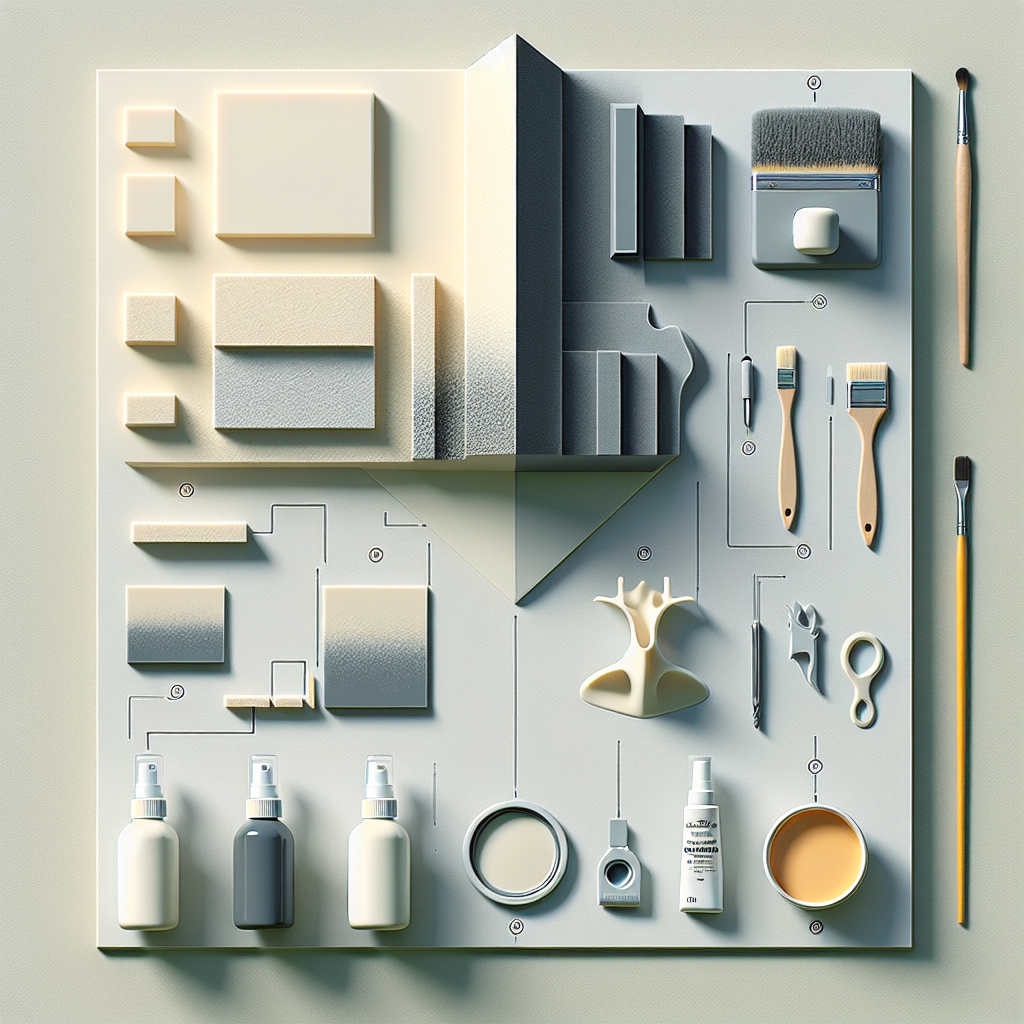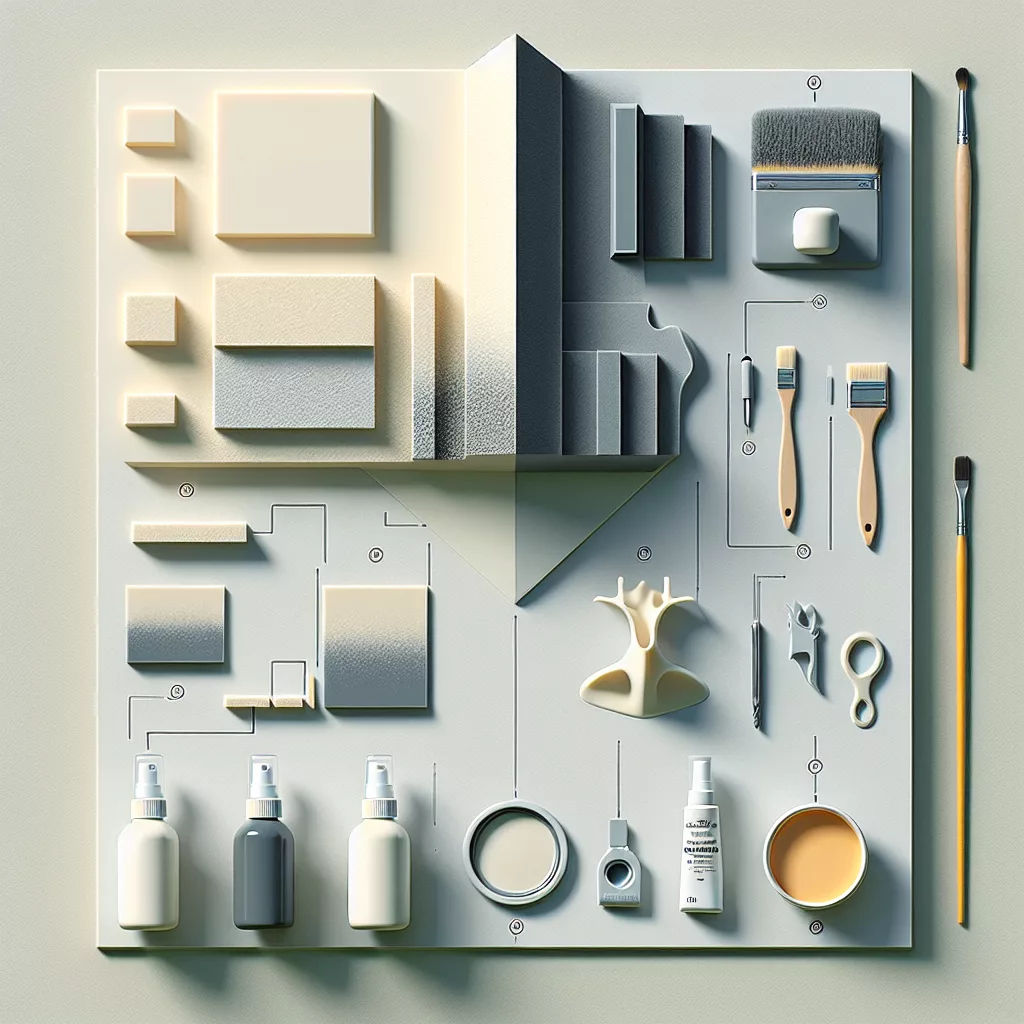Choosing the Right 3D Print Material for Painting
Before diving into painting, it’s crucial to know that your approach will depend on the filament or resin you’ve used. PLA, ABS, PETG, and resin prints each have unique characteristics. PLA is straightforward to finish and paint, while ABS can benefit from acetone smoothing for a glossy base. Resin prints, with their fine detail, demand delicate handling during preparation.
Preparing Your 3D Prints: Cleaning and Smoothing
A flawless paint job starts with meticulous preparation. Begin by removing all supports and carefully sanding down any layer lines or blemishes. Start with a coarse grit sandpaper (around 120-200 grit), and gradually move to finer grits (400 or even 1000) for a smooth finish. For hard-to-reach areas, try needle files or small sanding sticks.
Once sanded, wash your print with warm, soapy water to eliminate dust and oils. Let it dry completely—moisture can ruin paint adhesion.
Filling Gaps and Imperfections
Even after sanding, many prints—especially FDM—may have small gaps or layer seams. Use a hobbyist filler putty or a two-part epoxy (like Bondo or Milliput) to fill these imperfections. Apply with a spatula, let it cure, then sand smooth. Repeat if necessary for a completely even surface.
Priming: The Essential First Step
Priming creates a uniform, paint-friendly surface and helps reveal any flaws you missed in prep. Use a spray primer designed for plastics—automotive primers work well. Hold the can about 6-8 inches away and apply light, even coats to avoid drips. Let each coat dry thoroughly. If defects appear, sand again and re-prime as needed.
For resin prints, consider a fine surface primer to preserve details.
Choosing Paints for 3D Prints
Acrylic paints are the gold standard for most 3D prints. They’re easy to use, quick to dry, and come in a vast color range. For models requiring extreme durability or outdoor use, consider spray enamels or automotive paints.
If you’re airbrushing, use paints formulated for airbrush use and thin as needed. This method provides ultra-smooth, professional-grade finishes.
Painting Techniques for a Pro Finish
You have several options:
- Spray Painting: Best for large, smooth areas. Multiple thin coats are preferable to one thick coat.
- Hand Painting: Ideal for details, weathering, or miniatures. Use high-quality brushes for a smooth application. For small models, invest in fine-tip brushes for precision work.
- Airbrushing: Professional results with even coverage and fine gradients. Requires practice but worth the investment for advanced projects.
Remember to let each layer dry fully before applying another. For richer colors, build up several thin coats rather than one thick one.
Adding Weathering, Effects, and Details
For realism, experiment with washes, dry brushing, and weathering powders. Washes settle into recesses and bring out fine details, while dry brushing highlights raised edges. Rust, soot, and metallic effects can add dramatic realism to props and models.
Sealing and Protecting Your Paintwork
Once satisfied with your paint job, protect it with a clear sealant. Matte, satin, or gloss finishes are available depending on your desired effect. Spray sealants work best for even coverage—apply in light coats as with primer and paint.
For pieces subject to handling, a few extra coats of clear sealer can increase durability.
Tips and Troubleshooting
- Always paint in a well-ventilated area and use a mask when spraying.
- Test your paints and finishes on a scrap piece if possible.
- Take your time—proper preparation and patience lead to pro results.
Conclusion
Painting 3D prints is both an art and a science. With diligent prep work and the right techniques, anyone can transform a basic print into a vibrant, professional-quality piece. Whether you’re finishing cosplay props, miniatures, or functional parts, these steps will elevate your work and help you paint 3D prints like a pro.


Leave a Reply